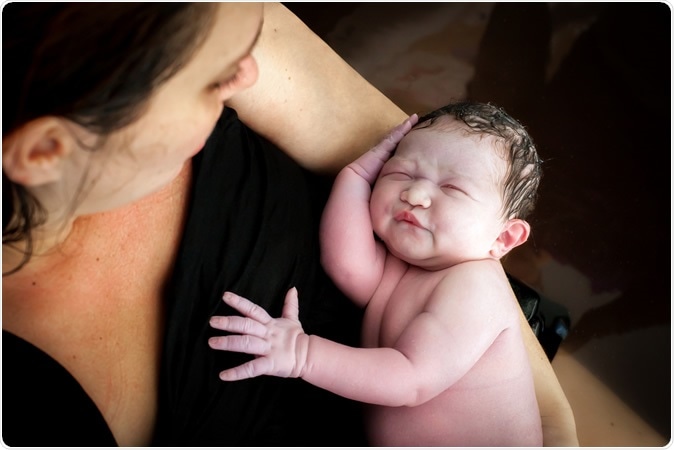A new large scale study has confirmed what many midwives and mothers instinctively knew – it’s really not safer giving birth in a hospital than at home if you had a low-risk pregnancy so far. This is bound to reassure the growing number of low-risk pregnant women living in countries with reasonably good access to healthcare who want to deliver their babies at home.

Image Credit: In The Light Photography / Shutterstock
The research was designed to answer one question: Do women who, at the start of labor, plan to give birth at home (irrespective of whether they fit local criteria for home births), have more stillbirths and early infancy deaths compared to low-risk women who choose, when labor starts, to give birth in hospital?”
The study was led by Eileen Hutton at McMaster University, and looked at the risk of death to the baby both during childbirth and in the first four weeks of life. The results showed no statistically significant difference in risk between planned home or hospital deliveries.
This is the very first study in this field to use an accepted, published and peer-reviewed protocol. It is also the largest meta-analysis on this topic to date, and covers the greatest number of factors that could affect the outcome.
The current study made use of data on about 500 000 births which were planned to occur at home, and compared this with the outcomes on the same number of births which were planned to take place in hospital. This information was collated from 17 studies dating from 1990 onwards, which compared neonatal outcomes from home and hospital births. The countries from which the data originated include the US, Canada, Sweden, England, the Netherlands, Australia, New Zealand and Japan. The group of women who intended to have home births was compared with a similar number of women with as closely matching characteristics as possible and with care providers who also matched as much as possible.
Before the analysis began, women who planned birth at home were categorized as those who met the local criteria for home births and those who did not. The degree to which local healthcare support was available for home births was also taken into account, to examine the hypothesis that this would affect the outcome in relation to the place of birth.
The home birth context was thus classified as well-integrated and less well-integrated. A well-integrated environment would include the availability of qualified and recognized practitioners to help with home births; their ability to synchronize with hospitals for emergency care if required; access to a reliable transport system in case of emergency; and their having adequate equipment and supplies on hand for emergencies. Of the studies included, 13 were in well-integrated environments and 4 in the other type.
The primary outcome analyzed was the death of the baby from after the onset of labor up to 28 days post-childbirth. This included babies with birth defects. Other outcomes were the number of babies who required resuscitation at birth, low Apgar scores (which indicate the health of the baby after birth), and neonatal intensive care unit (NICU) admission.
What did the study conclude?
The results showed that there is no significant difference in the baby’s health whether the baby is born at home or in a hospital. The parity of the women also did not affect the birth outcome by place of birth. The meta-analysis of studies which reported Apgar scores showed a significant trend in favor of home births, as did those which reported the number of NICU admissions.
The authors sound a note of caution in generalizing the results of the current study when they note that many studies of home birth outcomes originating in less well-integrated settings had to be excluded for various reasons. This may have biased the results by excluding studies which were perhaps more likely to produce unfavorable birth outcomes. However, they state with confidence that in contexts where quality resources are available for women who intend to have home births, there is no difference in the risk to the baby.
Hutton said, “More women in well-resourced countries are choosing birth at home, but concerns have persisted about their safety. This research clearly demonstrates the risk is no different when the birth is intended to be at home or in hospital. Our research provides much needed information to policy makers, care providers and women and their families when planning for birth.”
The results were published in The Lancet's EClinicalMedicine journal.
Journal reference:
Eileen K. Hutton, Angela Reitsma, Julia Simioni, Ginny Brunton, Karyn Kaufman, Perinatal or neonatal mortality among women who intend at the onset of labour to give birth at home compared to women of low obstetrical risk who intend to give birth in hospital: A systematic review and meta-analyses, EClinicalMedicine, 2019, https://doi.org/10.1016/j.eclinm.2019.07.005., https://www.sciencedirect.com/science/article/pii/S2589537019301191?via%3Dihub